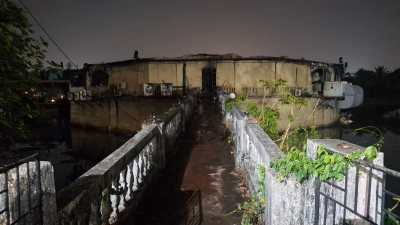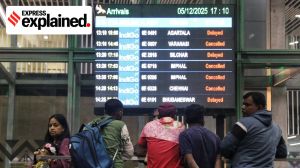Swell waves likely to hit several coastal areas over the weekend, says INCOIS: What are these waves?
In March, swell waves led to flooding in several areas of Kerala — the worst affected were Alappuzha, Kollam, and Thiruvananthapuram districts. Such flooding events are called Kallakkadal in Kerala.
 Houses damaged after water enters inside due to swell waves in Kollam, Kerala, in March. (ANI Photo)
Houses damaged after water enters inside due to swell waves in Kollam, Kerala, in March. (ANI Photo)The Indian National Centre for Ocean Information Services (INCOIS) on Friday (May 3) forecasted that high sea waves, also known as swell waves, might hit the coastal areas of Goa, Maharashtra, West Bengal, Odisha, Tamil Nadu, Kerala, Lakshadweep, Karnataka, Gujarat, and Andaman & Nicobar Islands between Saturday (May 4) and Sunday (May 5).
INCOIS cautioned fishermen and coastal population and urged for total suspension of operational/recreational activities at beach/nearshore regions.
In March, swell waves led to flooding in several areas of Kerala — the worst affected were Alappuzha, Kollam, and Thiruvananthapuram districts. Such flooding events are called Kallakkadal in Kerala.
What are swell waves?
These waves are formed by an ocean swell, hence the name swell surge. Ocean swells occur not due to the local winds, but rather due to distant storms like hurricanes, or even long periods of fierce gale winds. During such storms, huge energy transfer takes place from the air into the water, leading to the formation of very high waves. Such waves can travel thousands of kilometres from the storm centre until they strike shore.
Usually, states like Kerala witness swell waves as a result of strong winds in the southern part of the Indian Ocean, where an ocean swell is generated, and the waves then travel north to reach the coast in two or three days.
The March swell waves were generated after a low atmospheric pressure system moved over the region from the South Atlantic Ocean — 10,000 kilometres off the Indian coast. The arrival of the pressure system resulted in strong winds, which led to the formation of swell waves of up to 11 metres in height. These waves hit the Kerala coast and Lakshadweep.
To forecast swell waves, INCOIS launched the Swell Surge Forecast System in 2020 which can give forewarning seven days in advance.
What is the difference between swell waves and tsunamis?
Unlike swell waves, a tsunami is a series of enormous waves created by an underwater disturbance usually associated with earthquakes occurring below or near the ocean. Tsunamis are around 10 times faster than swell waves. Although both swell waves and tsunamis slow down near the coast, the latter hit land at 30–50 km/h.
- 01
- 02
- 03
- 04
- 05






































